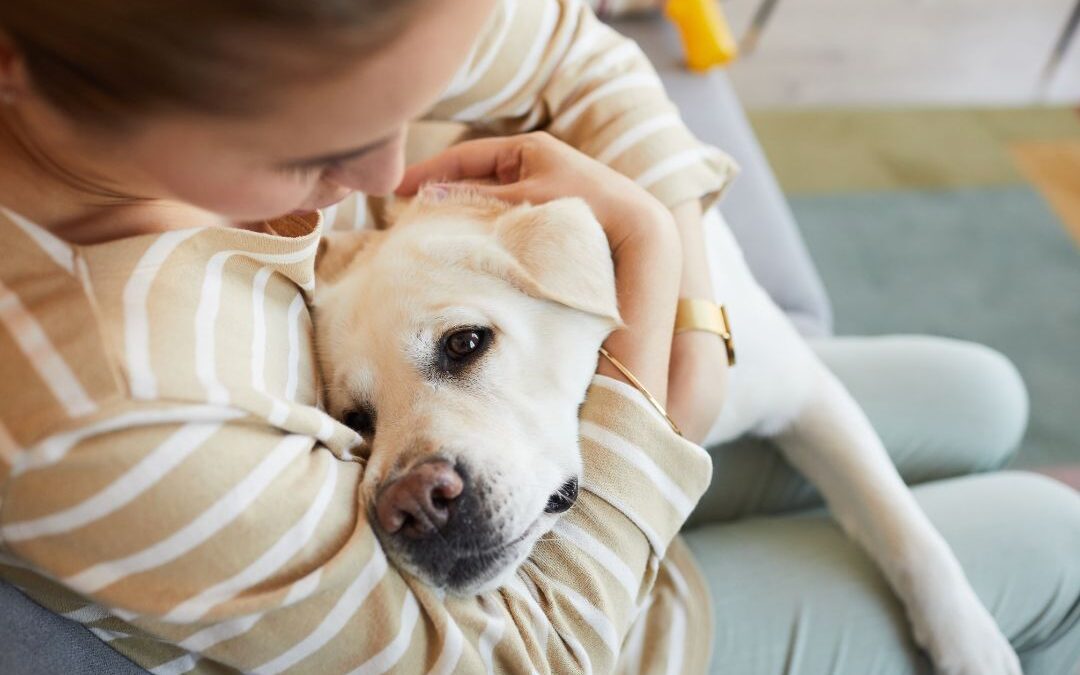Snuggling with your pet significantly strengthens the bond between you and your furry friend. This physical closeness fosters a sense of security and trust. For pets, particularly dogs, this interaction mimics the pack behavior of cuddling for warmth and safety. It reinforces their loyalty and affection towards you. I cherish our morning snuggles, where Foxtrot lays his head across my shoulder and neck, creating a moment of pure comfort and connection.
Interacting with pets has been shown to reduce stress levels. Petting and snuggling release oxytocin, a hormone associated with love and bonding, in both humans and animals. This can lower cortisol levels, reducing stress and promoting a sense of calm and well-being. For many, snuggling with a pet like Foxtrot provides a comforting escape from daily stresses.
Pets are known to alleviate symptoms of depression and anxiety. The unconditional love and companionship they offer can be immensely therapeutic. Snuggling amplifies these benefits, providing physical contact that can improve mood and reduce feelings of loneliness.
The act of snuggling can also have physical health benefits. Lowered blood pressure, reduced heart rate, and the potential for better sleep are among the advantages. Pets like Foxtrot can also motivate their owners to engage in physical activities, such as walking or playing, contributing to overall better health.
Some studies suggest that having pets can boost your immune system. Regular interaction with pets exposes you to different bacteria, which can strengthen your immunity. This is particularly true for children who grow up with pets, as they are less likely to develop allergies and asthma.
Having pets can increase your social interactions. People often connect over their love for animals, and snuggling stories or shared experiences can be great conversation starters. Pets also provide a common ground for meeting new people, whether in parks, pet stores, or veterinary clinics.
Dogs are naturally warm in the winter due to their fur, which acts as insulation. This makes snuggling with them particularly comforting during colder months. Interestingly, dogs don’t sweat except through their feet and nose, allowing them to stay cooler in the summer. Their bodies are naturally insulated to keep them warm in the winter and cool in the summer, making them perfect snuggle buddies year-round.
Just like humans, dogs also dream. During the Rapid Eye Movement (REM) stage of sleep, dogs might twitch, whimper, or move their paws as if they are running. Snuggling with your pet while they dream can be a fascinating and endearing experience, giving you insight into their active minds even while they sleep.
One of the most significant drawbacks of snuggling with pets is the potential for allergies. Pet dander, saliva, and fur can trigger allergic reactions in sensitive individuals. These reactions can range from mild sneezing and itching to severe asthma attacks. If you or someone in your household has pet allergies, snuggling can exacerbate these symptoms.
Pets can carry bacteria, parasites, and other pathogens that might pose health risks. Close contact through snuggling can increase the chances of transmitting zoonotic diseases (diseases that can be transferred from animals to humans). Regular grooming and veterinary check-ups are essential to minimize these risks, but hygiene remains a concern.
While snuggling can strengthen bonds, excessive indulgence can lead to behavioral issues. Pets might become overly dependent or exhibit separation anxiety when left alone. It’s essential to balance affection with discipline to ensure your pet remains well-adjusted and independent.
Many pet owners enjoy letting their pets sleep in their beds. However, this can lead to sleep disruptions. Pets might snore, move around, or take up too much space, affecting your sleep quality. It’s crucial to assess whether the benefits of having your pet in your bed outweigh the potential drawbacks to your rest.
Pets, especially dogs, can become territorial about shared spaces. If they see the bed or couch as their domain, they might display aggressive behavior towards others who try to share that space. Training and setting boundaries can help mitigate these issues, but it’s a factor to consider.
Although rare, there is a risk of physical harm from snuggling with pets. Larger pets, like Foxtrot the Labrador, might accidentally cause harm by jumping or moving suddenly. Additionally, certain pets might become startled or agitated, leading to scratches or bites. Always approach snuggling with awareness and respect for your pet’s comfort levels.
Regular veterinary care plays a crucial role in ensuring that snuggling with your pet remains a positive experience. Veterinarians can help manage potential allergies, check for parasites, and ensure your pet is in good health. Routine veterinary visits are essential for early detection of health issues that could be exacerbated by close contact.
Snuggling with your pet, particularly with a loving and affectionate dog like Foxtrot, offers numerous benefits, including emotional bonding, stress relief, improved mental health, and various physical health advantages. The comfort of their warm fur in the winter and their ability to stay cool in the summer makes them perfect snuggle partners year-round. Moreover, witnessing your dog dream while snuggling adds a unique and touching dimension to the experience.
However, it’s important to be aware of the potential downsides, such as allergies, hygiene concerns, and behavioral issues. By understanding both the benefits and downfalls, you can make informed decisions about how to interact with your pets. Ensuring regular veterinary care, maintaining good hygiene, and setting appropriate boundaries can help maximize the positive aspects of snuggling while minimizing the risks. With the right approach, snuggling with your pet can be a deeply rewarding and mutually beneficial experience.

